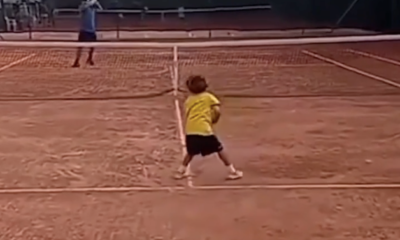
Progressive Development of a High Performance Tennis Player
The document outlines a structured pathway for developing high-performance tennis players, spanning various phases of growth from childhood through adulthood. It emphasizes stages such as the Foundation Phase, Refinement/Transition Phase, and World-Class Performance Phase, detailing physical, tactical, technical, and mental/emotional skills crucial at each stage. The emphasis shifts from fun and fundamentals in early years to more complex skills, individualized training, and competitive play as players mature. The program includes specific coaching approaches tailored to age groups, recommended training durations, competition types, and scoring systems, ultimately aiming to foster self-reliance, resilience, and a strong intrinsic motivation in players.
Key Insights
- Development is phased, with specific skills targeted at each growth stage.
- Early training focuses on enjoyment and basic skills, gradually introducing competition and tactical understanding.
- Mental and emotional skills are equally emphasized, fostering resilience and decision-making.
- Coaching strategies adapt with the player’s maturity, with a focus on individualized programs post-puberty.
- Competition structures evolve, with increasing match exposure as players progress, ensuring a comprehensive development pathway.
Frequently Asked Questions
What are the key phases in the development of a high-performance tennis player?
The key phases include the Foundation Phase, Refinement/Transition Phase, and World-Class Performance Phase, each with specific skill focuses and competitive structures.
How important are mental and emotional skills in a player’s development?
Mental and emotional skills are crucial, as they help develop resilience, decision-making, and intrinsic motivation, all of which contribute to a player’s overall performance and enjoyment of the sport.
What type of competition is recommended for younger players?
Younger players are encouraged to participate in fun, entry-level team events with modified scoring systems to keep the experience enjoyable and engaging.
How does coaching change as players mature?
Coaching evolves from fun, group-based activities in early stages to more structured, individualized programs with high-performance coaches focusing on specific growth and development issues as players reach puberty and beyond.
Full Article: The Progressive Development of a High Performance Tennis Player










You must be logged in to post a comment Login